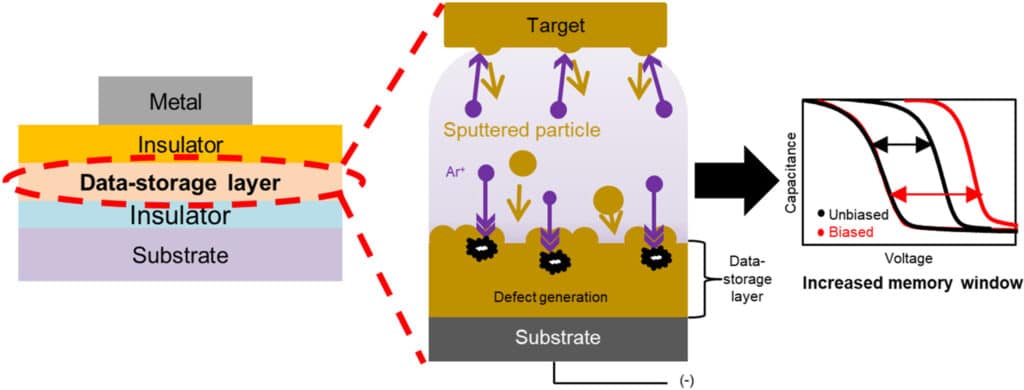A group of scientists are working on a cutting-edge technology that has the potential to dramatically improve flash memory performance. The basic principle is based on the fun concept of “bumper cars”, similar to how bumper cars bump into each other and other vehicles in an area, this new technology aims to improve the performance by a strong ion bombardment. To aid high throughput data requirements for neuromorphic computing and AI/ML-related applications, the bombardment of strong ions can help the memory platform reliably express multiple data streams in a single device. Furthermore, this makes it the ideal candidate for advanced applications in neuromorphic computing and increased memory capacity.
Yoonyoung Chung (Department of Electrical Engineering and Department of Semiconductor Engineering) of POSTECH with the PhD candidate Seongmin Park (Department of Electrical Engineering) are working in tandem with Samsung Electronics to develop a flash memory drive by intentionally creating defects. As technology advances, memory requirements get more and more demanding. AI/ML-based technologies, neural networks, and neuromorphic computing require devices with multi-level data storage capabilities, but the existing technology is limited by its durability, scalability and storage capacity.

(Credit: Sciencedirect.com, S. Park, et al)
To overcome these challenges, the team of researchers utilised a strong plasma bombardment method while depositing the data-storage layer of flash memory to artificially generate defects in the storage device. Furthermore, the team of researchers confirmed that an increased amount of electrons can be stored in the artificially created defects, hence increasing the amount of data storage capacity of the flash drive many folds, as compared to a conventional memory stick. A memory device with multiple data levels can be demonstrated when electrons are filled in gradually into the data storage layer of a flash memory, where there are an increased number of defects. The particular device involved in this experiment has eight distinctive data levels.
The findings of this experiment hold a lot of significance and can help minimise the risk of formulating a new semiconductor design or structure while significantly advancing flash memory with improved performance and scalability for AI/ML applications and neuromorphic computations.
The study can be read here.







